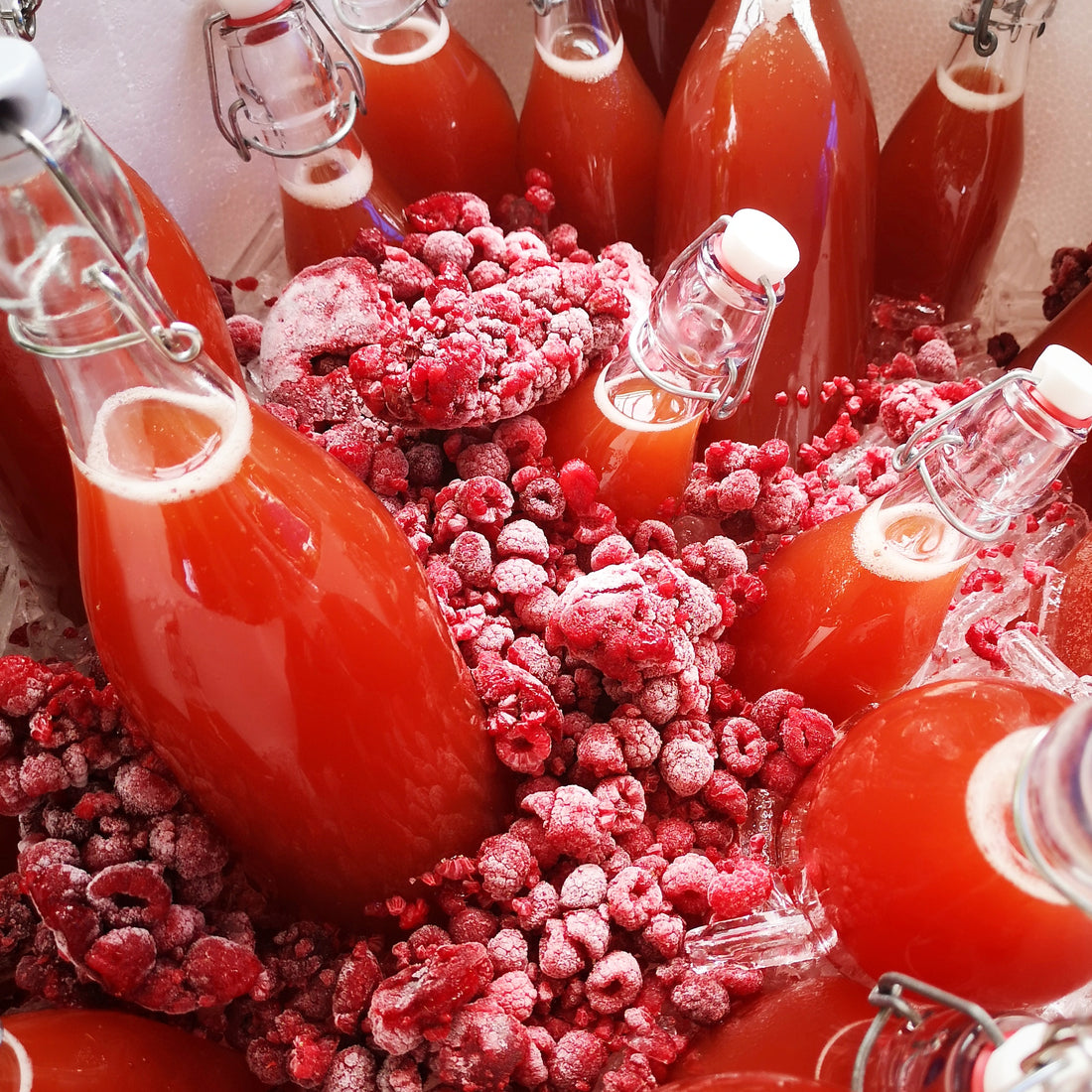
It's Easy To Make Kombucha In Your Own Home!
One of the great things about kombucha, is that it's a very easy and forgiving drink to make - especially if it's your first time. In this article, I'm going to show you how to make kombucha at home that's healthy, delicious - and yes, even fizzy too! I should know a bit about making kombucha - I'm the Co-Founder of KombuchaWOW! and from our Thailand kombucha brewery here in Phuket, we make over 2000L of sparkling raw kombucha per week!
Buy a SCOBY
Your first step is to get a SCOBY. You can easily find one of these for sale on Lazada for a hundred baht or so. The SCOBY is what will take your sweetened base tea and sugar mix (more on this in a minute), and turn it into kombucha. Make sure the SCOBY you buy is a kombucha SCOBY and not one that has been made using vinegar at any stage. This is rare when buying on Lazada, but it does happen. Ask before you buy.
Also, it's the liquid that comes with the SCOBY that's most important, rather than the "pellicle". This pellicle is the thing that looks like a mushroom floating in liquid, and although it's a nice to have, it's not a need to have - providing you have at least 200ml of this liquid (which is actually kombucha that you're going to add to your sweet tea mix as you'll see later in this article. This is a controversial statement amongst members of the kombucha community, but trust us on this. You just need the liquid.

A SCOBY is a Symbiotic Culture Of Bacteria & Yeast (SCOBY). The yeast will feast on the sugar you're going to give it in your first ferment process, and its byproduct is CO2 and alcohol. The friendly bacteria then come along and consume the alcohol, and its byproduct happens to be all the beneficial organic acids such as acetic and gluconic acid.
I Can't Afford or Find a SCOBY!
No worries. There are two methods for growing your own scoby.
- You can grow your own scoby from another bottle of kombucha you've purchased.
- You can grow a scoby from absolute scratch using fresh whole pineapples.
I have written another article on both of these methods that I suggest you read so you have your scoby ready to go.
OK, assuming you have your scoby ready to go, let's make our first 4L of kombucha!
Ingredients To Make Kombucha At Home
- Tea - can be 12g of loose leaf, or 12 regular tea bags, and your choice on black tea or green tea
- Sugar - honestly, just make it 280g plain white cheap sugar. Remember, this is sugar for the yeast to feed on, and not you. By the time it's fermented and ready, the sugar content will be way lower. And DON'T try to "make it healthy" by using Stevia or another 'light sugar' - the yeast hate it, and you won't end up with kombucha.
- 4L water - don't get caught up if it's been through reverse osmosis. Just make sure it's filtered.
- SCOBY (pellicle + 500ml liquid) - break pellicle into chunks for a better and more effective result.
Step 1
Boil your kettle with 1L of water. The other 3L of room-temperature water will be added later. You're going to add the 1L boiling water to the 270g of sugar.


OK, so make sure you stir until all the sugar has dissolved. This is important.

Step 2
Now the sugar is dissolved, add the loose tea in a cloth bag OR add all the tea bags.

Now leave the tea to infuse for 20 minutes.
Once the 20 minutes is up, remove the tea bags or bag of loose tea. You'll now have a VERY strong 1L of black sweet tea!
Step 3
Now go ahead and add that the other 3L of room temperature water to this 1L. The reason we do this way, is to just speed the process up - if you boiled all 4L of water and had to wait for it to cool down until the next step, well you'd be there for more than 20 minutes!
Step 4
Next, we'll go ahead and pour the 4L sweet tea in its final container - you might use a large glass jug, for example.

People get caught up in what material is best and worst for fermenting kombucha, but if you're using 304 stainless steel or glass or just plastic - you're going to be ok. STAY AWAY from using coloured glass or any pottery - you're going to have a bad time if you try and use them. Avoid! Reason is you don't want anything from the fancy coloured glass leeching into your kombucha.
Finally, add in the chunks of SCOBY pellicle and all the liquid that came with it. You might be tempted to pull off any weird looking strands or brown bits - don't. Just add the chunks and liquid and the most important bit: STIR THOROUGHLY! What we're looking to do here, is to disperse evenly throughout the 4L all of the pellicle and liquid you added. That is what we call, "inoculating" your tea with the kombucha culture.
Cover with something cloth and an elastic band - all we're looking for here, is for no flies to be able to get into the container.
And that's it! Leave for a minimum of 7 days at room temperature, and it's best if you can keep it out of direct sunlight.

Taste on day 7 and if it's to your liking with the sweetness and right amount of sourness and tanginess, then you can drink there and then!
A more common option will be to bottle it - or go on to your second ferment which is where you get to experiment with whatever flavours you want! I talk more about second fermentation in this article, and it's also where you'll get the best fizz.
Righto, see how you go with these instructions and recipe - and deffo send us comments on how it turned out!






